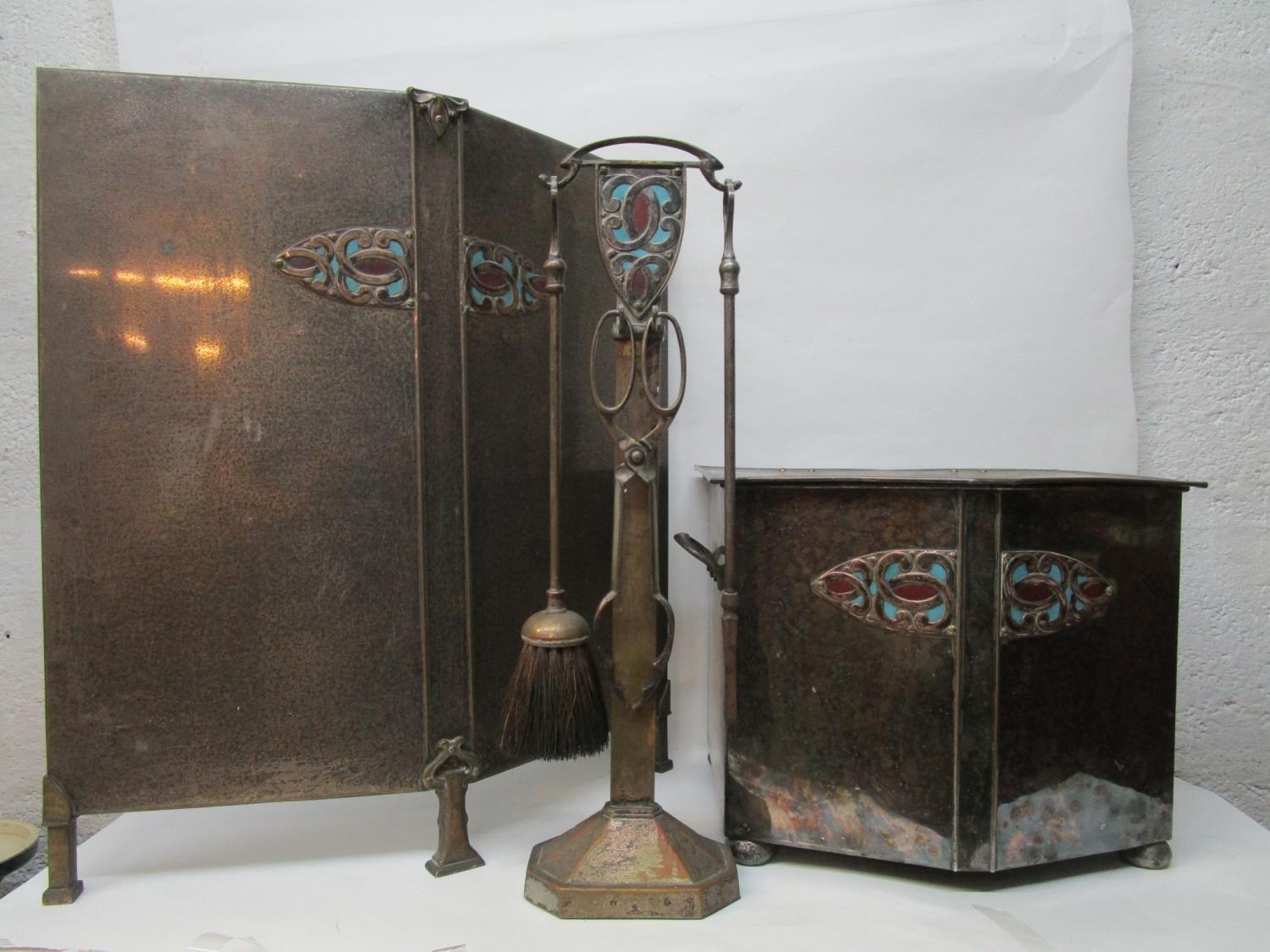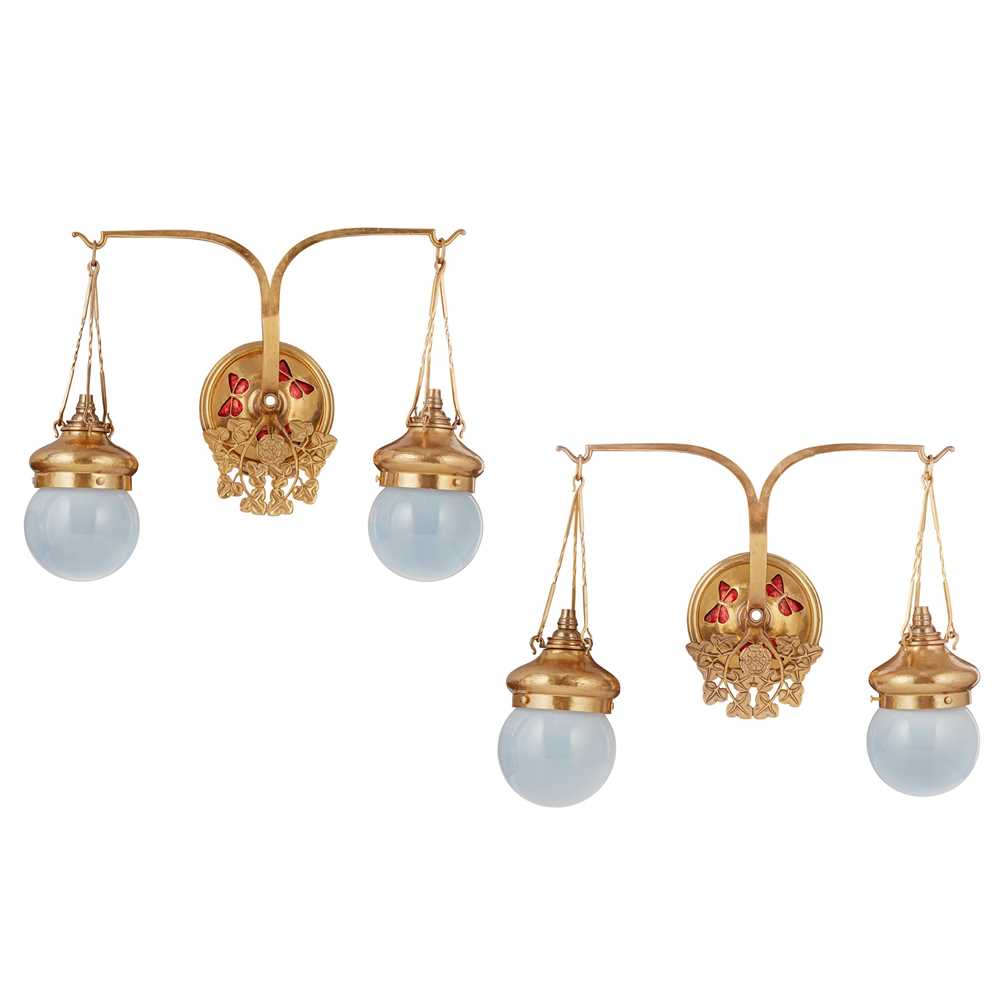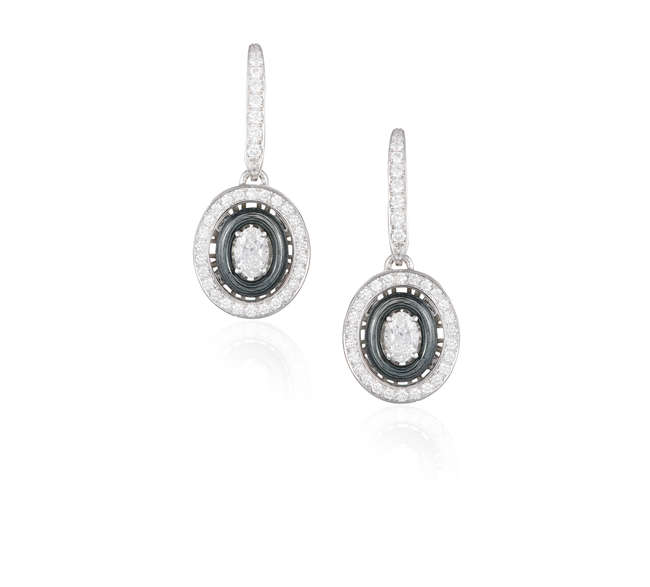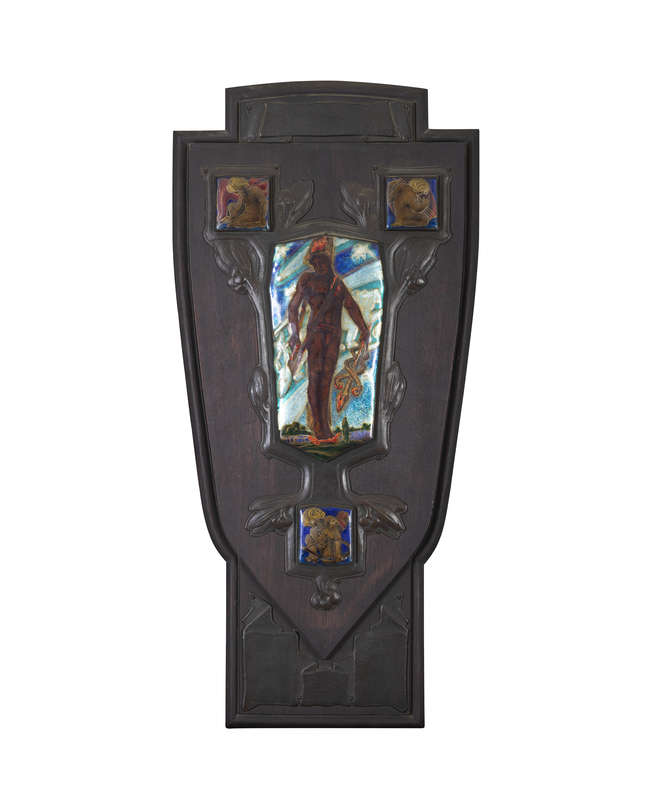Arts & Crafts Enamel, Fire Opal and Freshwater Pearl Dog Collar, probably England, c. 1905, designed as four polychrome champleve enamel peacocks with silver pallions interspersed stylized wirework blossoms bezel-set with cabochon fire opals and highlighted by pearls, counter-enameled, joined by strands of trace link chain, gold mount, lg. 13 1/4 and wd. 1 7/8 in., unsigned. Exhibition History: The Pre-Raphaelite Era 1848-1914, Delaware Art Museum, item 6:41, April 12 - June 6, 1976. Note: The Delaware Art Museum curators of the 1976 exhibition were of the opinion that this dog collar was "almost certainly designed by C.R. Ashbee". Around 1900, Ashbee began producing more formal pieces, having taken on a number of trained jewelers and enamellists to execute his designs. Records show that Ashbee designed about a dozen brooches and pendants with the peacock theme in the early 1900s. At the same time, according to Alan Crawford's work on Ashbee, Guild of Handicraft documentation does not refer to any dog collars. Also, though Ashby's jewelry from this period was indeed less austere in color harmony, and more sumptuous in the use of gold wirework and gemstones, these stylistic features can also be generally applied to a number of makers in England at the time. Literature: This dog collar appears in Twentieth Century British Jewellery from 1900 to 1980, by Peter Hinks, p.49, as work attributed to Alfred Edward Jones (1879-1954). A. E. Jones was a student at the Birmingham Vittoria Street School, founded in 1887 with the dual purpose of teaching students the art of design as well as the specialized techniques of the craft. From 1907, according to Hinks, the Birmingham style with its foliate emphasis exerted a strong influence on the whole of the British Arts & Crafts movement. During his career as a jeweler and silversmith, Jones designed for Liberty & Co., and executed commissions for the Birmingham and Bromsgrove Guilds. The Gaskins enameled some of his silver pieces. Hinks notes that Jones's complex designs were marked by "enlaced tendrils and scrolls, tapered and tipped with droplets of gold", which characterize the necklace offered here. Some find similarities in his work to that of C.R. Ashbee, while others note a strong Art Nouveau influence like that which characterizes the improvised wirework in the jewelry of Sir Alfred Gilbert
Arts & Crafts Enamel, Fire Opal and Freshwater Pearl Dog Collar, probably England, c. 1905, designed as four polychrome champleve enamel peacocks with silver pallions interspersed stylized wirework blossoms bezel-set with cabochon fire opals and highlighted by pearls, counter-enameled, joined by strands of trace link chain, gold mount, lg. 13 1/4 and wd. 1 7/8 in., unsigned. Exhibition History: The Pre-Raphaelite Era 1848-1914, Delaware Art Museum, item 6:41, April 12 - June 6, 1976. Note: The Delaware Art Museum curators of the 1976 exhibition were of the opinion that this dog collar was "almost certainly designed by C.R. Ashbee". Around 1900, Ashbee began producing more formal pieces, having taken on a number of trained jewelers and enamellists to execute his designs. Records show that Ashbee designed about a dozen brooches and pendants with the peacock theme in the early 1900s. At the same time, according to Alan Crawford's work on Ashbee, Guild of Handicraft documentation does not refer to any dog collars. Also, though Ashby's jewelry from this period was indeed less austere in color harmony, and more sumptuous in the use of gold wirework and gemstones, these stylistic features can also be generally applied to a number of makers in England at the time. Literature: This dog collar appears in Twentieth Century British Jewellery from 1900 to 1980, by Peter Hinks, p.49, as work attributed to Alfred Edward Jones (1879-1954). A. E. Jones was a student at the Birmingham Vittoria Street School, founded in 1887 with the dual purpose of teaching students the art of design as well as the specialized techniques of the craft. From 1907, according to Hinks, the Birmingham style with its foliate emphasis exerted a strong influence on the whole of the British Arts & Crafts movement. During his career as a jeweler and silversmith, Jones designed for Liberty & Co., and executed commissions for the Birmingham and Bromsgrove Guilds. The Gaskins enameled some of his silver pieces. Hinks notes that Jones's complex designs were marked by "enlaced tendrils and scrolls, tapered and tipped with droplets of gold", which characterize the necklace offered here. Some find similarities in his work to that of C.R. Ashbee, while others note a strong Art Nouveau influence like that which characterizes the improvised wirework in the jewelry of Sir Alfred Gilbert












Testen Sie LotSearch und seine Premium-Features 7 Tage - ohne Kosten!
Lassen Sie sich automatisch über neue Objekte in kommenden Auktionen benachrichtigen.
Suchauftrag anlegen